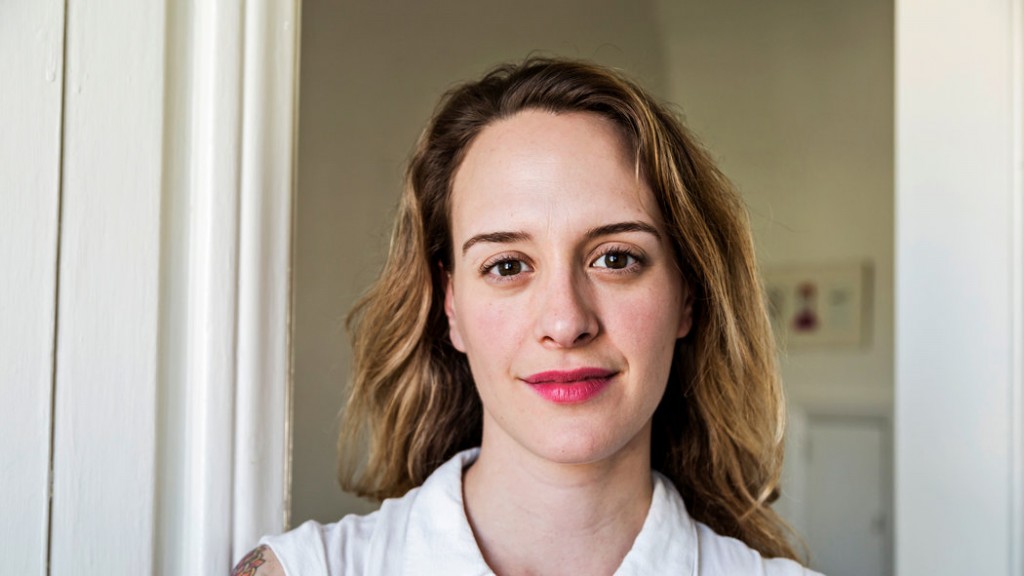She observed “that almost without exception they are shown in their relation to men,” and she longed to see represented in literature “those unrecorded gestures, those unsaid or half-said words, which form themselves, no more palpably than the shadows of moths on the ceiling, when women are alone, unlit by the capricious and coloured light of the other sex.” If you’re anything like me and compulsively apply the Bechdel test to books as well as movies, you’ll agree she’d be pretty disappointed to find her dream relatively unrealized, even a century later.
That’s where Emily Gould’s Friendship comes in. Published last year to much acclaim, it’s a book about two women, Amy and Bev, who like each other. Actually, it would be more accurate to say that they love each other, which means that sometimes they don’t like each other, but stick it out anyway. That’s what’s so exciting about Friendship — not only does it begin to fill the yawning void of the female friendship narrative, but it goes above and beyond in depicting its complexity.
I caught up with Gould — author, blogger, and publisher — with a few questions about the nature of Friendship.
Let’s start at the beginning, with the title. Did you feel like you had to underline this theme, or else people might not get it? Especially since the friendship is between women?
I had a lot of placeholder titles before I settled on this one. I thought the title should be as straightforward as possible and describe what the book was about. When I published my essay collection, I have to be honest, I got a little embarrassed by the 10th time I had to say “And The Heart Says Whatever” out loud. It felt like explaining the impetus behind a tattoo – something private and hard to articulate and vulnerable and teen-aged. So Friendship appealed just because it is simple and unembarrassing, even though it’s lacking in SEO. It’s funny, now that the book is being published in other languages, to see whether Friendship works there. In Dutch it’s called Crossroads, in Italian Two of Us, and in German it’ll be called Best Friends, like the way we are.
 Labor is a secondary, but super-important, theme in the book. Was it important for you to show women supporting each other’s livelihoods (like when Elise gets Bev a job), or were you just telling it like it is?
Labor is a secondary, but super-important, theme in the book. Was it important for you to show women supporting each other’s livelihoods (like when Elise gets Bev a job), or were you just telling it like it is?
I love learning about how people make their living and I love reading books where that’s not a hazy obscured backdrop to the story. The female characters helping and hindering each other’s work is certainly a big part of the story – I guess because it’s been such a struggle for me to figure out how to make a living, I wanted to depict that struggle!
Were there specific ideas about friendship between women that you wanted to disrupt with this book?
I just wanted to leave men out of it as much as possible — and also romance. A bisexual writer I admire read a draft and asked why Bev and Amy didn’t just sleep with each other to solve their problems, but I really wanted to depict a relationship that’s more complex even than a sexual relationship! I also wanted to get into the currents of jealousy and resentment mixed with admiration and need that power even very good, very close friendships.
The relationship depicted between Amy and Bev is often an embattled one, like the kind you’d see bemoaned in an article entitled “Why It’s Hard to Make/Keep Friends in Your 30s.” Do you agree? What forces make friendships between adult women difficult?
I think any long, close relationship between complex, interesting people is bound to have its difficult spots, just because people and the circumstances of their lives change all the time and we have to meet each other and renegotiate the terms of our relationships over and over again. But that’s as it should be. The idea of a static, cozy love between friends seems very boring to me.
I like the idea of lasting female partnerships as a counter to the heterosexual marriage narrative that can dominate narrative art about women of a certain age. I mean, marriage is fine, too, but it’s not everything.
Friendship is also a reimagining of the “young girl comes to big city” narrative, as both Bev and Amy come from out-of-state, so to speak. Was it important to you to give that story an update?
It’s more just that that’s the only story I know how to tell, and this is the only place in the world I really understand.
The novel often shows uniquely contemporary aspects of life — Amy works at a start-up, there’s lots of texting and Facebook-checking. Do you see Bev and Amy’s friendship as uniquely contemporary, too, or is that just its particular representation?
I guess just its representation – I think there’s something timeless about Bev and Amy. Since I wrote this book, I’ve found versions of their dynamic showing up in a few other places, TV shows and books that share the concerns of Friendship. I think that’s really cool, that women’s friendship in general is being mined for dramatic potential more.
What do you think the world can learn from women BFFs?
I like the idea of lasting female partnerships as a counter to the heterosexual marriage narrative that can dominate narrative art about women of a certain age. I mean, marriage is fine, too, but it’s not everything.
Pick up your copy of Friendship here. And check out Emily Gould’s bookstore, Emily Books, for awesome and interesting books to start 2016 off right.












-300x169.jpg)




